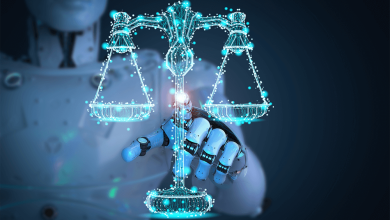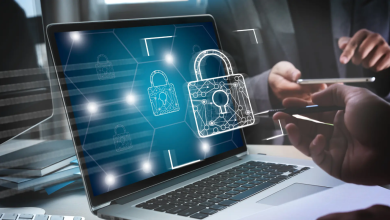Your Digital Footprint Could Be Used in Court—Here’s How
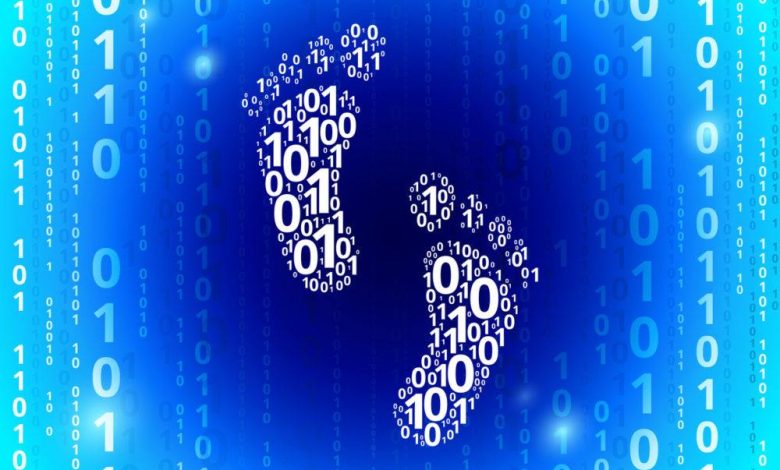
Your digital footprint could be used in court—here’s how is a reality of modern life. Every click, post, message, or search you make online leaves a trace. These traces—your digital footprint—are increasingly used as evidence in legal cases around the world. This article explains what digital footprints are, how they’re collected and used in court, real-life case studies, key features, pros and cons, and practical tips to protect your privacy and reputation.
Introduction: Your Digital Footprint Could Be Used in Court—Here’s How
Every online action leaves a mark. From emails and social media to GPS data and search history, your digital footprint is a powerful tool for investigators, lawyers, and courts. It can prove innocence, establish guilt, or even contradict alibis. But it also raises big questions about privacy, data security, and the limits of surveillance.
What Is a Digital Footprint?
A digital footprint is the trail of data you leave behind when using the internet or digital devices. It includes:
- Social media posts, comments, and likes
- Emails and text messages
- Website visits and search history
- Online transactions and payments
- GPS/location data from phones and cars
- App usage and device logs
- Cloud storage files and backups
There are two types:
- Active footprint: Data you deliberately share (posts, uploads, emails)
- Passive footprint: Data collected without your direct action (cookies, IP logs, device metadata)
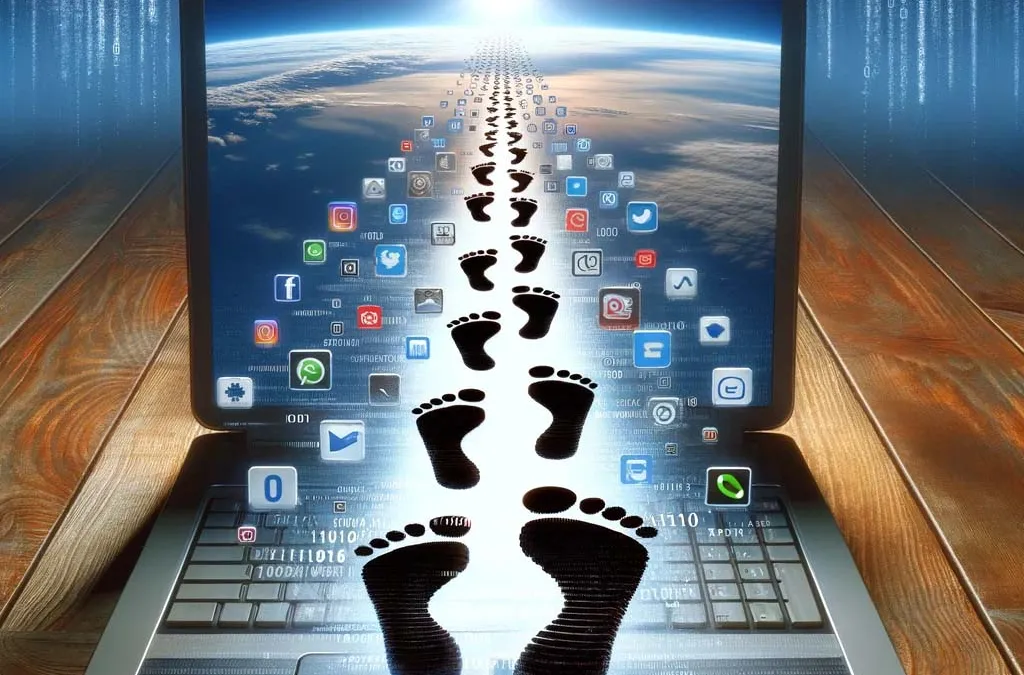
Key Features of Digital Footprints in Legal Cases
- Traceability: Digital footprints can identify individuals, even if they try to stay anonymous.
- Recoverability: Deleted files, messages, or posts can often be recovered by forensic experts.
- Timeline creation: Timestamps and metadata help reconstruct events and movements.
- Cross-device evidence: Data from phones, computers, wearables, and smart devices can be combined for a fuller picture.
- Authentication challenges: Courts must confirm that digital evidence is genuine and untampered.
- Privacy and consent: Laws often require warrants or consent to collect certain types of digital data.
How Digital Footprints Are Collected and Used in Court
Your Digital Footprint Could Be Used in Court—The Process
1. Collection and Preservation
- Investigators secure devices, cloud accounts, and third-party data sources.
- Data is copied and preserved to avoid alteration (chain of custody).
2. Analysis and Correlation
- Forensic experts extract, recover, and analyze data using specialized tools.
- Patterns, timelines, and links between people or events are established.
3. Authentication and Admissibility
- Evidence must be shown to be authentic, reliable, and relevant.
- In Nigeria and many countries, laws like the Evidence Act or Section 84 (Nigeria) guide admissibility.
- Courts may require expert testimony to explain technical details.
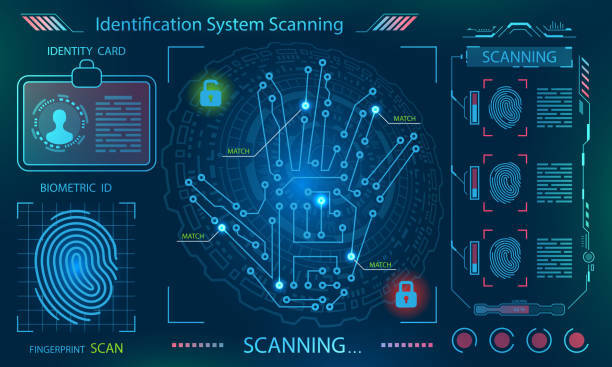
4. Presentation in Court
- Digital evidence is presented as screenshots, logs, charts, or expert reports.
- Cross-examination may challenge the integrity, chain of custody, or interpretation of digital data.
Your Digital Footprint Could Be Used in Court—New Frontiers
The Explosion of Data Sources
Digital evidence now comes from far more than computers and phones:
- Smart home devices: Voice assistants (like Alexa), smart thermostats, and security cameras can log conversations, entries, and movements.
- Wearables: Fitness trackers and smartwatches record steps, heart rate, location, and even sleep patterns—used in accident, health, and criminal cases.
- Connected cars: GPS logs, speed data, and even audio from in-car systems have been admitted as evidence.
- Cloud storage: Files, photos, and backups on Google Drive, Dropbox, or iCloud are often subpoenaed in both civil and criminal cases.
Visual: Digital Evidence Ecosystem Table
| Device/Platform | Data Type Collected | Example Legal Use |
|---|---|---|
| Smartphone | Calls, texts, GPS | Alibi, harassment, movement |
| Laptop/PC | Emails, files, browser | Fraud, IP theft, contracts |
| Social Media | Posts, DMs, check-ins | Defamation, threats, alibi |
| Smartwatch | Health, location, steps | Accident timing, activity |
| Home Assistant | Voice logs, commands | Domestic disputes, timeline |
| Car Infotainment | GPS, calls, audio | Accident, theft, timeline |
| Cloud Storage | Files, photos, logs | Document recovery, IP issues |

The Legal Process: From Device to Courtroom
How Digital Evidence Moves Through the Legal System
1. Seizure and Preservation
- Devices and accounts are secured to prevent tampering.
- Forensic imaging creates exact copies for analysis.
2. Forensic Analysis
- Specialists recover deleted data, analyze metadata, and reconstruct timelines.
- Chain of custody is documented at every stage.
3. Authentication
- Experts verify that evidence is genuine and unaltered.
- Digital signatures, hash values, and logs are used for proof.
4. Legal Review and Admissibility
- Lawyers argue for or against admitting digital evidence, citing local laws.
- Judges decide if evidence is relevant, authentic, and not overly prejudicial.
5. Presentation in Court
- Evidence is shown as screenshots, charts, or interactive displays.
- Experts may testify to explain technical details.

Digital Footprints vs Physical Evidence: Table
| Feature | Digital Footprint Evidence | Physical Evidence |
|---|---|---|
| Collection | Devices, cloud, networks | Objects, documents, DNA |
| Traceability | High (metadata, IP, GPS) | Varies |
| Recoverability | Often possible (even if deleted) | Sometimes lost/destroyed |
| Tampering Risk | High (can be altered remotely) | Moderate (needs physical access) |
| Authentication | Needs expert verification | Usually direct observation |
| Privacy Impact | High (personal, sensitive data) | Lower |
| Admissibility Law | Evolving, complex | Well-established |
When Your Digital Footprint Becomes a Legal Battleground
Family Law and Divorce
- Custody battles: Social media posts, texts, and GPS data are increasingly used to prove or disprove claims about parenting, lifestyle, or income.
- Asset discovery: Online banking records, digital receipts, and even Venmo transactions can reveal hidden assets or spending patterns.
- Protective orders: Threatening messages or location check-ins may be used to support or contest restraining orders.
Estate and Inheritance Disputes
- Digital wills: Emails and cloud-stored documents can clarify a deceased person’s intentions.
- Access to accounts: Courts may order tech companies to release passwords or access to digital assets.
“In modern family law, a single text or photo can tip the scales in a custody or divorce case.”
— Adaeze O., Family Law Attorney
The Dark Side: Digital Footprints and Wrongful Accusations
Risks of Misinterpretation and Digital Manipulation
- Deepfakes: AI-generated images or videos could be used to fabricate evidence, making authentication even more important.
- Context loss: A message or photo taken out of context can mislead judges or juries.
- Shared devices: Innocent people may be implicated by someone else’s actions on a shared phone or computer.
- Hacking and framing: Malicious actors can plant incriminating data on someone’s device.

Visual: Digital Evidence Risk Table
| Risk Factor | Example Scenario | Impact on Case |
|---|---|---|
| Deepfake media | Fake video of suspect at scene | False accusation, mistrial |
| Out-of-context | Sarcastic message as “threat” | Misjudged intent |
| Shared device | Roommate downloads illegal files | Wrongful suspicion |
| Hacking | Data planted by third party | Compromised defense |
Digital Footprints in Civil Litigation and Corporate Law
Business Disputes and Intellectual Property
- Trade secrets: Email trails, file access logs, and cloud storage records can show theft or misuse of confidential information.
- Contract enforcement: Timestamped emails and digital signatures often decide whether a contract is valid or breached.
- Harassment and discrimination: Internal chat logs and emails are routinely used in workplace lawsuits.
Visual: Corporate Digital Evidence Table
| Evidence Type | Legal Use Case | Example Outcome |
|---|---|---|
| Email chains | Prove/disprove contract terms | Win or lose breach case |
| Access logs | Show who viewed files | Identify IP theft |
| Chat transcripts | Document harassment/hostility | Support or defend claims |
| Cloud backups | Recover deleted documents | Reveal fraud or compliance issues |
Cross-Border and International Legal Challenges
The Global Reach of Digital Evidence
- Jurisdiction: Data stored abroad may require international cooperation or legal orders.
- Data sovereignty: Some countries restrict export of digital evidence, complicating global cases.
- Mutual legal assistance treaties (MLATs): Used to request evidence from other countries, but can be slow.
“In cross-border disputes, digital evidence is both a bridge and a barrier. Navigating global privacy laws is now a core legal skill.”
— Samuel M., International Litigation Expert
The Future: AI, Big Data, and Predictive Justice
How AI Is Changing Digital Evidence
- Automated review: Machine learning tools scan terabytes of data to flag relevant evidence for lawyers.
- Predictive policing: Some jurisdictions use digital footprints (social media, phone records) to forecast crime risk—raising ethical concerns.
- Bias and fairness: Algorithms can reinforce existing biases if not carefully managed.
Visual: AI in Legal Evidence Table
| AI Tool | Legal Application | Key Concern |
|---|---|---|
| E-discovery bots | Scan emails for relevant terms | Missed nuance, false positives |
| Deepfake detection | Authenticate videos/images | Arms race with fake creators |
| Sentiment analysis | Assess tone of messages | Misread sarcasm or context |
| Predictive models | Flag high-risk individuals | Privacy, discrimination |
Case Studies: Real-Life Courtroom Scenarios
Case Study 1: Social Media Contradicts an Alibi
A suspect in a burglary claimed to be at a friend’s house. Investigators found tagged photos and check-ins on social media near the crime scene at the relevant time, directly contradicting the alibi.
Case Study 2: Text Messages Reveal Intent
In a drug case, police recovered deleted texts that detailed drug sales, meeting times, and code words, providing direct evidence of criminal activity.
Case Study 3: GPS and Location Data in a Hit-and-Run
A car’s GPS and a suspect’s smartphone location data placed them at the scene of a hit-and-run, matching the incident’s timeline and route.
Case Study 4: The Fitbit Murder Conviction
In Connecticut, Fitbit data showed a victim’s movements, disproving the defendant’s timeline and supporting the prosecution’s case. The court upheld the admissibility of wearable device data as scientific evidence.
Case Study 5: Email Metadata in Fraud
Unusual email metadata placed a suspect at a computer during fraudulent transactions, helping prosecutors build a timeline and narrative.
Case Study 6: Digital Alibi in Defense
A wrongly accused person’s digital footprint—emails, GPS data, and work logs—proved they were elsewhere during the alleged crime, leading to acquittal.
Case Study 7: Cloud Storage and Deleted Files
Forensic experts recovered deleted files from a cloud account, revealing evidence in a corporate fraud case.
Case Study 8: Search History as Evidence
In a cybercrime case, incriminating search terms and browsing history were used to show intent and knowledge of illegal activity.
Case Study 9: WhatsApp Chats in a South American Divorce
In Brazil, WhatsApp chat logs were used to prove infidelity and financial deception in a high-profile divorce, affecting custody and asset division.
Case Study 10: Smartwatch Data in a Personal Injury Suit
A runner in Argentina used fitness tracker data to prove her activity level before and after a car accident, supporting her claim for damages.
Case Study 11: Alexa Recordings in a US Murder Trial
Police subpoenaed Amazon for Alexa voice logs, which helped reconstruct a timeline and supported the prosecution’s theory.
Case Study 12: GPS Data in a Nigerian Kidnapping Case
Law enforcement used a suspect’s phone GPS logs to place him at the scene, helping secure a conviction.
The Role of Digital Forensics Experts
Why Experts Matter
- Technical expertise: Recovering, analyzing, and explaining complex data.
- Neutral testimony: Courts rely on unbiased expert witnesses to interpret findings.
- Cross-examination: Experts are often challenged on methods, chain of custody, and interpretation.
“Digital forensics is now as critical as DNA in many investigations. A single log file can change the outcome of a trial.”
— Dr. Maria Gomez, Digital Forensics Specialist
The Ethics and Privacy Dilemma
Balancing Justice and Privacy
- Warrants and consent: Most countries require a warrant or court order to access private digital data.
- Overreach risks: Mass data collection can sweep up innocent people’s information.
- Right to be forgotten: In some regions, people can request deletion of old data, but courts may still access it for legal reasons.
Digital Footprints in Business and Employment
Workplace Implications
- Employee monitoring: Emails, chats, and device logs are used in harassment, discrimination, and wrongful termination cases.
- Bring Your Own Device (BYOD): Blurs lines between personal and work data, raising privacy and ownership questions.
- Corporate investigations: Internal audits often rely on digital trails to uncover fraud, leaks, or misconduct.
Social Media, Messaging, and Reputation
Social Media as Evidence
- Defamation: Posts and comments are used in libel and slander lawsuits.
- Employment disputes: Old tweets or posts can be cited in hiring/firing decisions.
- Criminal cases: DMs and group chats often reveal intent or connections.
IoT, Cloud, and Wearables: The Next Legal Frontier
- IoT devices: Smart fridges, lights, and thermostats can show presence, absence, or movement.
- Cloud backups: Even deleted files may survive in backups, accessible by subpoena.
- Wearables: Heart rate spikes or sleep data can support or contradict witness testimony.
More Expert Quotes
“In South America, courts increasingly rely on WhatsApp and social media data. People must understand that nothing online is truly private.”
— Carlos Mendoza, Legal Analyst
“Digital footprints are forever. Even if you delete something, assume it can be recovered.”
— Dr. Ifeoma Okeke, Cybersecurity Consultant
Looking Ahead: The Future of Digital Evidence
- AI-powered analysis: Machine learning tools will help sift through massive amounts of data for relevant evidence.
- International cooperation: Cross-border cases require new treaties and collaboration.
- Privacy laws: Expect stricter rules and more user control—but also new ways for courts to access data.
If you’d like even more—such as a detailed legal checklist, interviews with forensic experts, or a focus on South American legal trends—just let me know your priorities!
Pros and Cons Table
| Pros of Digital Footprint Evidence | Cons of Digital Footprint Evidence |
|---|---|
| Can clarify timelines and intent | Can be tampered with or misinterpreted |
| Often recovers deleted or hidden data | Raises privacy and consent concerns |
| Helps prove or disprove alibis | Requires technical expertise to analyze |
| Supports or challenges witness testimony | Not always easy to authenticate |
| Can link suspects to crime scenes/events | Data overload—too much info to review |
| Useful for both prosecution and defense | Laws and standards still evolving |
Tips to Protect Your Digital Footprint
- Think before you post: Anything online could become evidence.
- Review privacy settings: Limit what’s public on social media and apps.
- Delete old accounts: Remove unused profiles and clear old data when possible.
- Use strong passwords: Protect your devices and accounts from unauthorized access.
- Be cautious with location sharing: Turn off GPS/location when not needed.
- Encrypt sensitive data: Use encryption tools for private files and communications.
- Understand your rights: Know local laws about digital evidence and privacy.
- Consult experts: If involved in a legal case, seek advice from digital forensics professionals.
- Regularly audit your accounts: Know what’s public and what’s private.
- Use encrypted messaging apps: For sensitive conversations.
- Be mindful of device sharing: Others’ actions on your device can affect your legal exposure.
- Back up important data: Protect evidence that could support your case.
- Educate family and staff: Everyone’s digital habits can impact shared devices or accounts.
Frequently Asked Questions (FAQ)
1. What is a digital footprint?
Your digital footprint is the data you leave behind from online activities—posts, emails, searches, device logs, and more.
2. Can deleted data be recovered and used in court?
Yes, forensic experts can often recover deleted files, messages, and logs from devices or cloud backups.
3. Is digital evidence admissible in Nigerian courts?
Yes, if it meets the requirements of the Evidence Act (Section 84) and is properly authenticated.
4. How do investigators collect digital footprints?
They use forensic tools to extract, preserve, and analyze data from devices, networks, and cloud services.
5. Can digital footprints prove innocence?
Absolutely. Digital evidence can establish alibis or contradict false accusations.
6. What are the risks of using digital evidence?
Risks include tampering, privacy breaches, misinterpretation, and technical errors.
7. Can social media posts really be used in court?
Yes, posts, photos, check-ins, and comments can all be used as evidence.
8. What about location data from phones and cars?
Location data is commonly used to place suspects at or away from crime scenes.
9. How can I reduce my digital footprint?
Limit sharing, use privacy settings, delete old accounts, and be mindful online.
10. What should I do if my digital footprint is used in a legal case?
Seek legal advice and consult a digital forensics expert to verify and challenge evidence if needed.
Conclusion
Your digital footprint could be used in court—here’s how: Every online move you make can become evidence for or against you in legal proceedings. Courts now rely on digital footprints to build timelines, prove intent, and test alibis. While this can help deliver justice, it also raises serious questions about privacy, consent, and data security. Protect your digital footprint, stay informed, and remember: in the digital age, your online actions matter more than ever.


